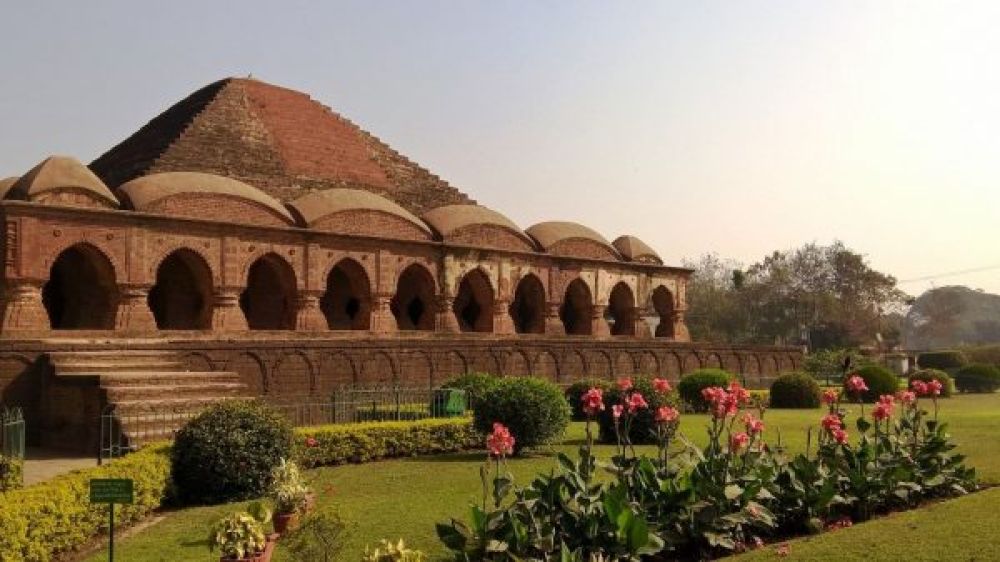

The Rasmancha Pavilion is a historical monument located in the town of Bishnupur in the Bankura district of West Bengal, India. It conveys an impressive history etched in its terra-cotta architecture. Built in approximately 1600 CE by the Malla king Bir Hambir, the structure stands as a unique instance of ancient Indian architecture that diverges from conventional temple structures.
The tourism history of Rasmancha is closely tied with the heritage of Bishnupur, which was the capital of the Malla dynasty. Known for its detailed terracotta work and distinctive architectural design, Rasmancha initially functioned as a ceremonial center where the idols of Lord Krishna from various temples were brought together during the Ras festival. This practice, however, was discontinued in the 19th century.
Over the centuries, Rasmancha stood through the tides of time, gradually seeking the attention of history enthusiasts and tourists alike. In the 20th century, the landmark was granted protection by the Archaeological Survey of India (ASI). The ASI undertook restoration projects to preserve its intricate designs and conserve the structure for future generations.
In recent years, the site has witnessed a steady increase in tourism due to the efforts of the West Bengal Tourism Department, which has included the monument in their promotional campaigns showcasing the rich cultural tapestry of the state.
With the expansion of the digital world, social media has become a pivotal channel for promoting travel experiences. Visitors to the Rasmancha Pavilion now often share their experiences online, which has significantly contributed to raising awareness and encouraging more tourists to visit.
Another trend is the combination of cultural tourism with eco-friendly practices. Tourists are increasingly looking for sustainable travel options, and the local tourism operators in Bishnupur are adapting by offering guided tours that respect the local environment and promote the conservation of the heritage site.
Lastly, experiential travel has become more desirable, with tourists wanting to immerse themselves in the local culture. Festivals, handicraft workshops, and traditional music performances in the vicinity of Rasmancha Pavilion now form an integral part of the tourism offerings, enriching the visitor's experience beyond mere sightseeing.
The Rasmancha Pavilion stands not only as a structure of historical significance but also as a testament to the evolving nature of tourism in West Bengal. Its conservation and promotion highlight the collaboration between heritage conservation and tourism development, providing a blueprint for other historical sites aspiring to put their mark on the world tourism map.